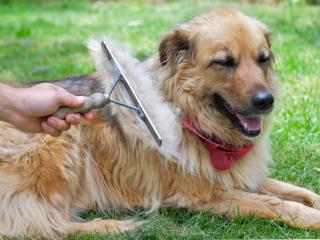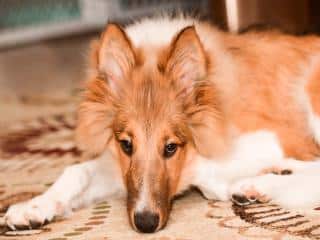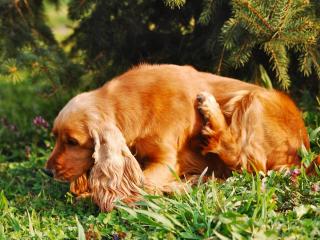

It’s quite normal for dogs to shed, especially during the two annual molts in spring and fall. However, if your furry friend suddenly starts to lose a lot of hair, take note. Indeed, fur that falls out in clumps or widespread hair loss can hint at a deeper issue. Let’s uncover when hair loss in dogs is normal and what it might be hiding.
Dogs molt twice a year – in the spring and fall – to adjust to seasonal changes in their environment. So, come spring, they shed fur suited for cold weather (a severe molt), while in the fall, they drop summer fur (a lighter molt). In fact, you can observe in dogs with long or medium-length hair, a thicker and longer coat during winter months. 💡 Molt isn’t uniform across the body to ensure protection, and it’s the tail hair that renews the least often.
Unfortunately for our homes, dog hair loss is inevitable. However, we can limit it by maintaining our pet’s coat.

💡 Give your dog a bath during the molt to speed it up.
Your dog’s kibble should be of high quality.
💡 Kibble based on fish is excellent!
 Brewer’s yeast is recommended because it contains vitamin B which strengthens the hair.
Brewer’s yeast is recommended because it contains vitamin B which strengthens the hair.💡 Start by giving the oil in small doses to see if your dog’s digestive system can handle it. A tablespoon for every 22 pounds (10 kilograms) of weight is recommended.
Some diseases lead to general hair loss or in certain areas, with or without itching. Don’t hesitate to consult your vet if your dog suddenly and excessively starts losing hair.
 Scabies, caused by a mite located in the ears, on the flanks, elbows, and thighs.
Scabies, caused by a mite located in the ears, on the flanks, elbows, and thighs.If you’d prefer a dog that sheds less hair, choose a breed whose hair keeps growing (requires grooming), like the Poodle, Shih Tzu, Lhasa Apso, or Yorkie for instance. And avoid short-haired dogs like Labrador, Jack Russell, Beagle, or Dalmatian whose hair is always falling out. Of course, they all make fantastic companions!